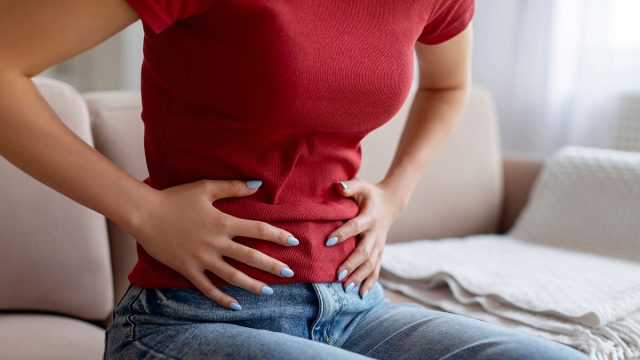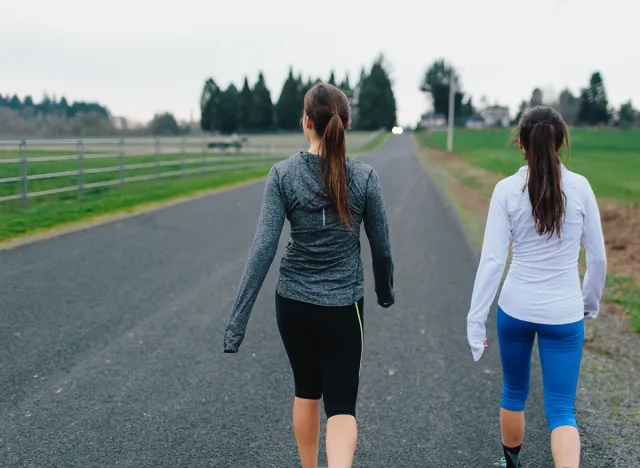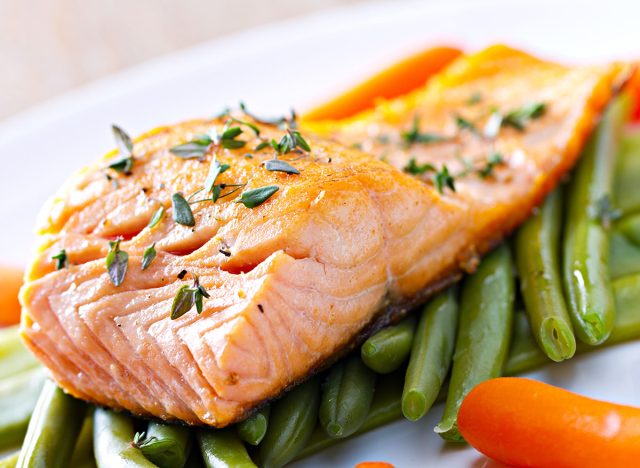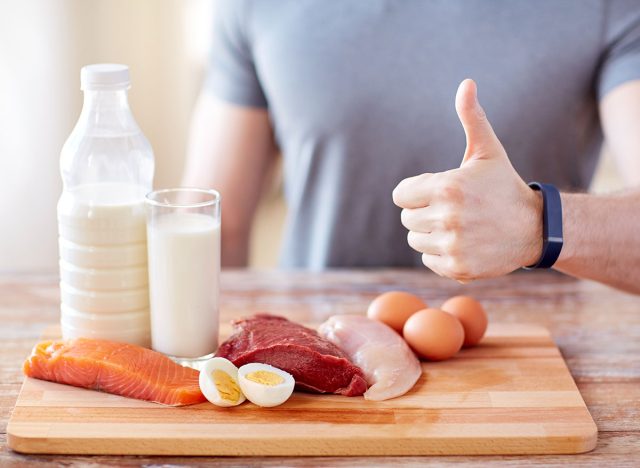4 Steps to Lose Your PCOS Belly Fat in 4 Weeks

Do you battle polycystic ovarian syndrome and struggle to lose belly fat? Tallene Hacatoryan is a PCOS Weight Loss registered dietitian and social media influencer who regularly shares content about how to stay in shape if you deal with hormonal issues. In a new viral video, she offers four steps to losing PCOS belly fat in just one month. "You will lose PCOS belly fat in four weeks by stacking these habits," she says at the start of the clip.
What Is PCOS?

PCOS is a very common hormone problem for women of childbearing age, according to Johns Hopkins. "Women with PCOS may not ovulate, have high levels of androgens, and have many small cysts on the ovaries," they explain. "PCOS can cause missed or irregular menstrual periods, excess hair growth, acne, infertility, and weight gain. Women with PCOS may be at higher risk for type 2 diabetes, high blood pressure, heart problems, and endometrial cancer."
Why Is It Harder to Lose Belly Fat with PCOS?

Many women with PCOS have insulin resistance, which makes it harder for them to lose weight and more likely to accumulate belly fat. "This means the body can't use insulin well. Insulin levels build up in the body and may cause higher androgen levels. Obesity can also increase insulin levels and make PCOS symptoms worse," says Johns Hopkins.
Step 1: Add Apple Cider Vinegar to Your Routine

Her first recommendation is to add apple cider vinegar to your diet. "You can include it in smoothies, salads, or take it as a shot. It's not a magic potion for losing belly fat, but it's a good start for week one," she says.
RELATED: I'm a Doctor, and Here are My Pro Ozempic Tips You Should Know
Here's What Science Says About ACV

What does science say about it? There is limited research that apple cider vinegar may help to reduce high cholesterol and regulate blood glucose levels. However, it may damage the teeth or throat due to the acidity of the mixture, so the best way to take it is by mixing one tablespoon of ACV with water and drinking it through a straw.
Step 2: Walk at Least 5,000 Steps a Day

Her second step to blasting belly fat? Get your steps in. "Start making it a habit to get at least 5,000 steps in a day. If you take a 10-minute walk after breakfast, lunch, and dinner, you'll pretty much get there," she says.
What Science Says About Walking for Weight Loss

Walking is a game changer in terms of exercise, especially at a brisk speed. One study published in JAMA Internal Medicine found that walking at a brisk pace for about 30 minutes a day led to a reduced risk of heart disease, cancer, dementia and death, compared with walking a similar number of steps but at a slower pace.
Step 3: Amp Up Protein Intake

During the third week, she recommends amping up your protein intake. "Week three, add protein powder to your breakfast smoothie to boost it up to 30 grams of protein," she suggests. "If you're using whey protein. Swap to plant-based protein because whey is made from dairy and that can affect your insulin sensitivity."
Here Is What Science Says About Protein

Science endorses protein for weight loss. Per clinical trials, consuming more protein than the recommended dietary allowance not only reduces body weight (BW) but also enhances body composition by decreasing fat mass while preserving fat-free mass (FFM) in both low-calorie and standard-calorie diets.
Step 4: Do Low-Intensity Strength Training
@pcos.weight.loss What's your PCOS type? Knowing your PCOS type can help you focus on the root cause of your PCOS symptoms so you don't guess in the dark! By focusing on PCOS types like insulin resistance or inflammation, you can help lower cravings, bloating, and much more with PCOS weight loss! #pcos #pcosweightloss #pcosawareness #pcostypes #pcosproblems ♬ ready or not – senia
Her final tip? "In week four, start doing low-intensity strength training," she says. "When you pick up the weights and start doing a slow weighted workout, it'll help improve your metabolism so you burn belly fat even after you're done with your workout to try a slow weighted workout."
RELATED: I Lost 24 Pounds in 2 Months, the Easiest Way Possible
What Science Says About Strength Training

According to the Mayo Clinic, strength and weight training help reduce body fat, preserve and increase lean muscle mass, and burn calories more efficiently. Strength training may also help you:
- Develop strong bones
- Manage your weight
- Enhance your quality of life
- Manage chronic conditions
- Sharpen your thinking skills.
And if you enjoyed this article, take advantage of these 15 Quick Ways to Lose Body Fat Percentage in a Week.




